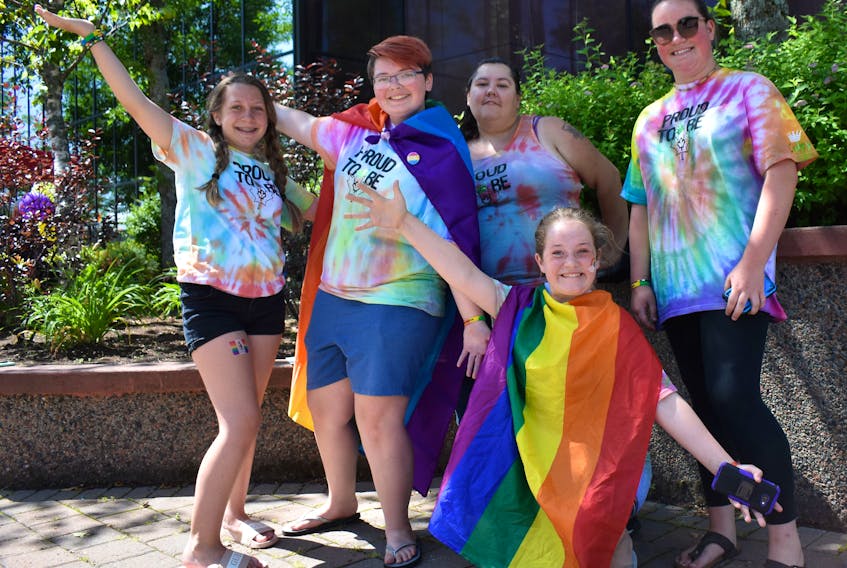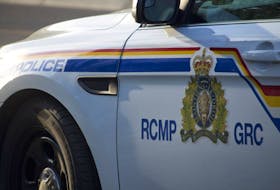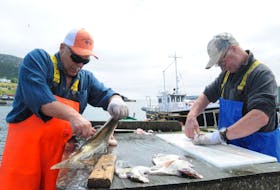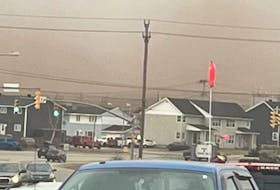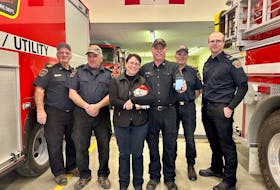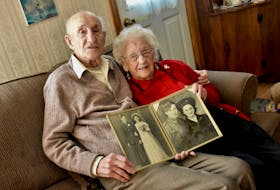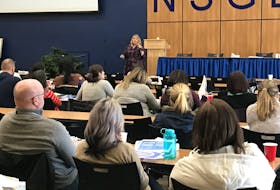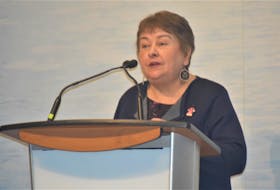Gender isn’t two-sided anymore.
Nor is it as easy as male and female as people in the LGBTQ+ community begin to find the terms to best self-identify.
Facebook has at least 58 different genders users can choose for their identity. Dating app Grindr also has varying gender options including “cis man”, “transwoman” and “non-conforming.” And as of this year, Canadians can opt for gender “X” on driver’s licences and birth certificates if they identify as non-binary or queer/gender queer.
“Being an ally isn’t all fun or rainbows … You don’t just post the Pride flag for a month and you’re an ally." - Sefin Stefura
“There’s a lot of people who like to harp and complain, 'Oh why are there so many more labels?' said Mitch Hill, community educator with the Cape Breton Youth Project.
“That tends to come from a lot of people who are cis and hetero, so it doesn’t affect (them) and it’s none of (their) business anyways. Or it comes from a lot of cis gay men or cis lesbian women who are older and coming to these terms now.”
Hill said gender identity doesn’t always equate to gender expression. For example, a transwoman who decides to not get breast implants is still a transwoman. It’s all about self-identity and if others don’t understand it, it’s their problem.
“If you can find a word that works for you and it makes you feel better in yourself and be able to disclose to others how you feel and understand yourself more and it makes you happier and healthier, no problem with more labels, as far as I’m concerned,” he explained.
Knowing what the terms are and what they mean can help you navigate your way around the LGBTQ+ community and become an ally — a title Hill and Cape Breton Youth Project summer student Sefin Stefura say is one you work towards.
“Being an ally isn’t all fun or rainbows … You don’t just post the Pride flag for a month and you’re an ally,” said Stefura, a transman.
“Being an ally involves actually doing work,” added Hill, who identifies as non-binary and queer. “It involves showing up for people, it involves volunteering, it involves not being a silenced voice if you hear somebody being mis-gendered … It’s a title to work toward and earn.”
If curious how someone identifies, Hill and Stefura recommend asking what pronouns they use or introducing yourself and saying what pronouns you use. But more important is knowing when to ask; if there isn’t a reason you need to know, don’t ask.
“If I am passing a stranger down the street, do not stop me and ask how I identify. It’s none of (their) business how I identify. They don’t need to know what pronouns I use,” Stefura said.
Some gender identity/sexuality and their definitions are explained in this video:
What's in a label?
Queer: used to refer to gay or lesbian (same sex couples), now an umbrella term for all sexual and gender identities that don’t fall into heterosexual (strait) or cisgender.
Gender Queer: not identifying to any gender. Similar to agender.
Non-Binary: not identifying to any gender; an umbrella term for anything not on the gender binary of former definitions of male and female
Cisgender: someone who’s biological sex, assigned at birth, is the same as gender they identify with. Not just for heterosexuals, gays and lesbians can be cisgender too.
Transgender: someone who’s biological sex, assigned at birth, is different from the gender they identify with. Trans people can also be non-binary.
Gender Fluid: someone who identifies with more than one gender, fluctuating between them. One day they could express their feminine side, the next the masculine one.
Gender Fuck/Gender Bending: someone who doesn’t adhere to perceived gender norms, like a drag queen in a ball gown with a full beard, or a drag king who doesn’t bind her chest. “It’s like sticking your middle finger up to gender,” said Stefura.
Bi-gender: someone who identifies with more than one gender, either at the same time or different times.
Demi-boy: half boy; feeling connected to their masculinity but not fully.
Demi-girl: half girl; feeling connected to their femininity but not fully.
Agender: similar to gender queer and non-binary, doesn’t identify with any gender.
Aromantic: someone who’s interested in sex but not interested in love or romantic relationships.
Asexual: someone who’s interested in love or romantic relationships but doesn’t have any sexual desires. Not to be confused with celibacy, which is a choice, some asexual people will have sex to have a child or for a non-asexual partner.
Lesbian: used to refer to ciswomen being attracted to other ciswomen. Now refers to women into women. “Transwomen are women too,” reminded Hill.
Gay: men (cis or trans) who are attracted to other men (cis or trans.)
Bi-sexual: classical definition was being attracted to both men and women. The definition has expanded to being attracted to more than one gender.
Pansexual: being attracted to all genders.
Two Spirit: “It’s an Indigenous concept of gender and sexuality, how the fluidity is within it,” said Geordy Marshall, a Pride Eskasoni co-founder who identifies as Two Spirit. People who are Two Spirit are equally connected to their masculine and female sides and can be gay, lesbian, trans, non-binary… anything they identify as.
Intersex: not a gender or sexual identity; a medical term and it should never be used for a transgender person unless they have specified they have this condition. Intersex people are born with sex characteristics which don’t fall into traditional male or female. Dozens of different conditions make someone intersex, including hormonal and chromosomal. For example, someone born with three Xs, instead of an XXY chromosome or someone with both testes and ovaries. Some intersex people might never know they are.

19th Annual Pride Cape Breton Parade
When: August 3
Time: 12 p.m.
Route starts: George and Dorchester streets, Sydney
Follows: Dorchester – Esplanade – Townsend – George – Ferry streets
Ends at: Open Hearth Park
Followed by: Pride Party in the Park
Time: 1-4 p.m.
Featuring: Drag queen/king performances, music by DJ Queen, dunk tank
RESOURCES
- 50+ Resources For LGBTQIA Allies
- PFLAG Canada - Nova Scotia Chapters
- Pride Cape Breton Society
- GLAD Media Reference Guide
RELATED
- Pride Cape Breton becoming more accessible with mobility, sensory safe areas
- Top picks for Pride Week in the Cape Breton Regional Municipality
- Pride parade fills downtown Halifax streets
- UPDATE: Pride is still a place of safety and inclusion for many in P.E.I.
- UPDATE: St. John’s mom starts group for free mom/dad hugs at Pride Parade

